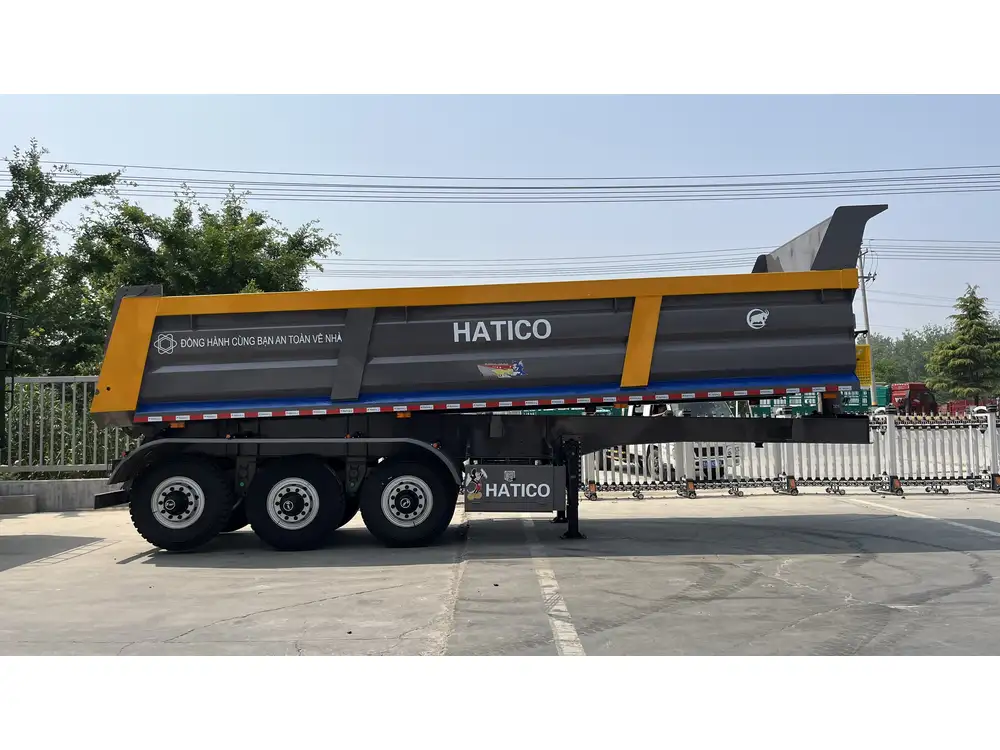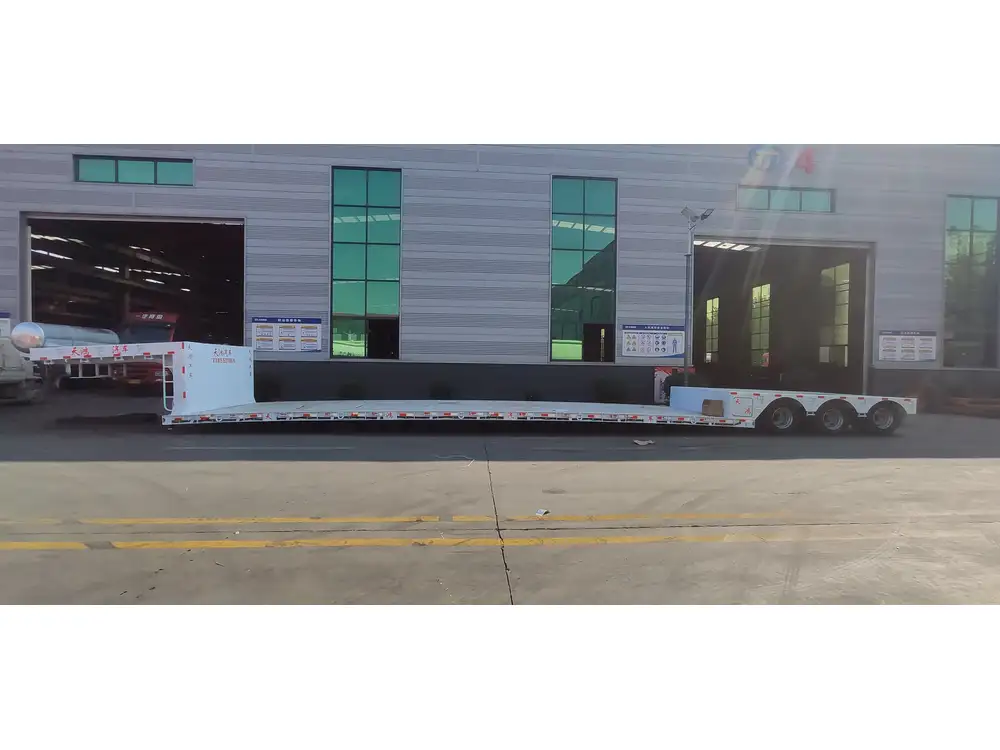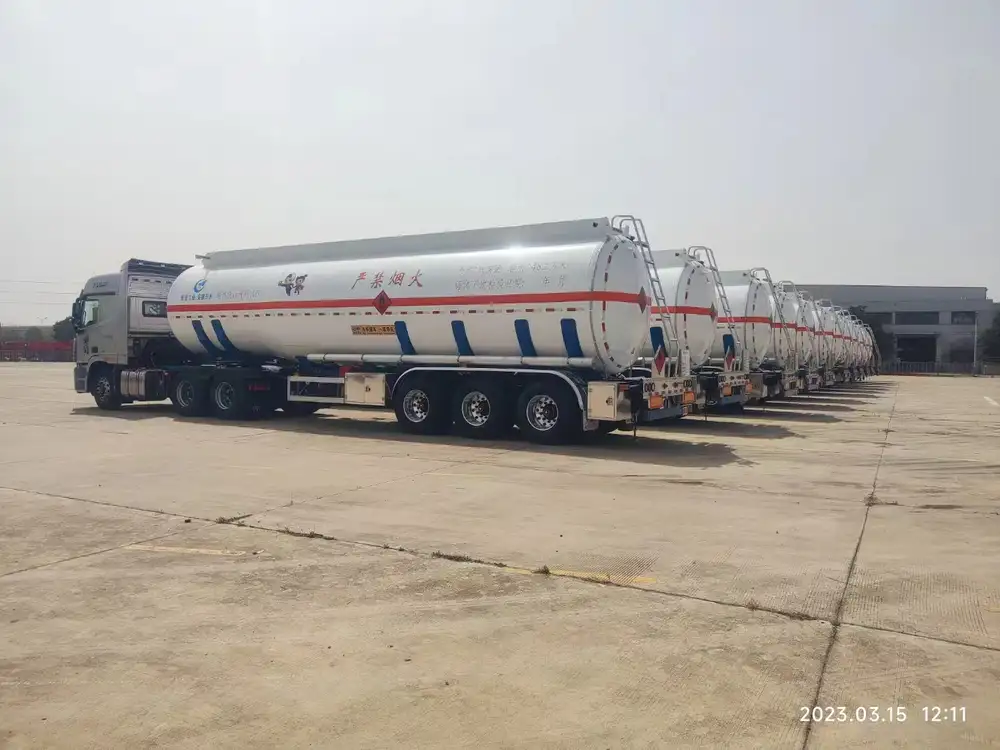When it comes to logistics, transportation, and freight management, understanding the specifications of semi-trailers is crucial for both manufacturers and consumers. Among these specifications, height plays a vital role in determining compatibility with various transportation routes, compliance with regulations, and loading capabilities. So, how tall is an average semi-trailer? This article delves into the specifics, addressing factors such as standard heights, types of semi-trailers, and their practical implications for transportation.
Standard Height of Semi-Trailers
The average height of a semi-trailer typically falls within a specific range, regulated by national and local transportation authorities. For standard flatbed and enclosed semi-trailers, the following guidelines apply:
| Type of Semi-Trailer | Average Height (Feet) | Height Range (Feet) |
|---|---|---|
| Standard Dry Van | 13.5 | 13.0 – 14.0 |
| Flatbed Trailer | 13.5 | 13.0 – 14.0 |
| Refrigerated Trailer | 13.6 | 13.0 – 14.0 |
| Lowboy Trailer | 11.0 | 10.0 – 12.0 |
| Step Deck Trailer | 11.0 | 10.0 – 12.0 |
Regulatory Considerations
In the United States, the maximum legal height for a semi-trailer is generally capped at 13.5 feet. This limitation is due to clearance regulations set to ensure that vehicles can safely traverse under bridges, overpasses, and other infrastructural elements without resulting in accidents or damages. It’s crucial for trucking companies to be aware of these regulations to avoid hefty fines and ensure safe passage.

International Standards
While the U.S. has set regulations, other countries may have varying standards. For instance, in Europe, the maximum permissible height for a trailer is typically around 4.0 meters (approximately 13.12 feet). Manufacturers must consider these differences when exporting semi-trailers or operating in international environments.
Types of Semi-Trailers and Their Heights
Depending on the cargo and operational requirements, different types of semi-trailers are used across various industries. Below we explore how height varies across different semi-trailer types.
1. Dry Van Trailers
Dry van trailers are closed containers used primarily for transporting goods that do not require temperature control. Their typical height is 13.5 feet, accommodating most general freight types.

2. Refrigerated Trailers (Reefers)
Reefer trailers maintain specific temperature conditions for perishable items. They slightly exceed conventional dimensions with an average height of 13.6 feet due to additional insulation and refrigeration equipment.
3. Flatbed Trailers
These open platforms facilitate the transport of oversized freight or cargo that cannot fit into standard trailers. Their height generally matches that of dry vans at 13.5 feet, though the open design allows for flexible loading arrangements.
4. Lowboy Trailers
Designed for transporting heavy equipment and machinery, lowboy trailers are engineered to have a lower deck height to facilitate loading and unloading. Their average height is 11.0 feet, with a range typically between 10.0 and 12.0 feet.

5. Step Deck Trailers
These trailers combine elements of flatbeds and lowboys, featuring a step-down design to accommodate taller loads while still being able to transport standard-height cargo. Their height usually aligns with lowboys at about 11.0 feet.
Implications of Height Variations
Understanding the height of semi-trailers has practical implications for logistics, efficiency, and safety:
1. Load Clearance and Route Planning
Freight companies must plan routes accounting for overhead clearance. Undersized routes could lead to potential accidents, as taller trailers may collide with bridges and structures.

2. Regulatory Compliance
Non-compliance with height regulations can result in citations, fines, or delays. Haulers must maintain accurate records and vehicle specifications to ensure alignment with local laws.
3. Impact on Load Capacity
Height constraints can influence the overall load capacity. Vibrations during transit and cargo shifts have different effects depending on the height and type of semi-trailer.
4. Driving Safety
Elevated loads can raise the center of gravity in trailers, particularly with loaded containers. This can compromise driving stability, especially during adverse weather conditions.

Choosing the Right Semi-Trailer Height for Your Needs
When selecting a semi-trailer, it’s imperative first to assess specific needs regarding cargo, weight, and height restrictions. Here are structured considerations to guide you:
1. Cargo Type
- Perishable Goods: Opt for a refrigerated trailer (average height: 13.6 ft).
- Heavy Machinery: Choose a lowboy or step deck trailer (average height: 11.0 ft).
2. Route Specifications
- Urban Areas: Routes with lower clearance will necessitate shorter trailers.
- Rural Areas: Consider standard height trailers where taller heights are permissible.

3. Regulatory Compliance
- Ensure all selections comply with local and federal regulations, specifically maximum height limits, to avoid penalties.
4. Trailer Specifications
Examining the manufacturer’s specifications will provide clarity on height and load capacity.
Frequently Asked Questions (FAQs)
To further assist you, we have compiled a list of common questions related to semi-trailer heights.

1. What is the maximum height for a semi-trailer in the U.S.?
The maximum height is 13.5 feet, but some states may approve exceptions. Always check with local regulations.
2. Can I modify my semi-trailer height?
While modifications may be possible, they often affect safety and compliance. Consult a professional before making any adjustments.
3. How does trailer height affect fuel efficiency?
Increased height can create more wind resistance, negatively impacting fuel efficiency. Consider aerodynamically designed trailers for better performance.

4. What is the typical weight capacity for standard semi-trailers?
Most standard semi-trailers can carry up to 26,000 pounds, depending on the trailer type and local regulations.
5. Are there trailers designed for specific heights?
Yes, lowboy and step deck trailers cater to specific height requirements, enabling transportation of oversized loads while complying with safety regulations.
Conclusion
The height of semi-trailers is a critical element in the logistics and transportation industry, impacting everything from load capacity to regulatory compliance. Understanding the average height—typically around 13.5 feet for standard trailers—and recognizing the variations based on trailer type can assist in making informed decisions that cater to specific freight requirements, contributing to the broader goal of efficient logistics management.
By taking detailed notes on specifications, regulations, and operational needs, businesses in shipping and transport can significantly enhance their performance, ensuring optimal routing, safety, and compliance in every venture. This knowledge reinforces the value of thoughtful engagement with semi-trailer functionalities, ultimately leading to smoother operations and enhanced profitability in your transportation endeavors.



